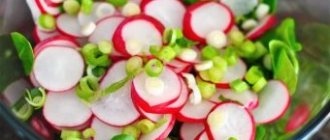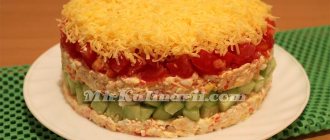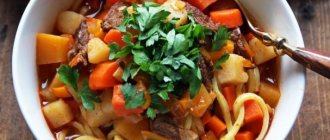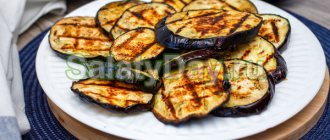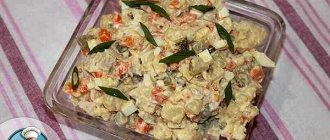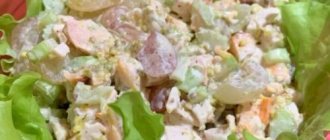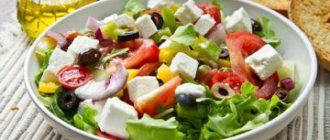Edited by an expert:
Nadezhda Primochkina, nutritionist – 11/16/2020
Two concepts characterize modern France: fashion and food. As in high fashion, the French attach great importance not only to the creation, but also to the presentation of culinary creations.
The history of French cuisine dates back to 1400, when the first cookbook appeared. The national cuisine developed and reached its peak under Louis the Sun, and the traditions that developed at that time have been preserved to this day.
Modern national dishes of France are a jewelery combination of products and flavor diversity.
Internationally recognized as one of the best, French cuisine has been included in the UNESCO list of “Masterpieces of Oral and Intangible Heritage” since 2010.
Specifics of French cuisine
The French treat cooking as an art form and consider recipes to be just a canvas into which each master weaves something of his own. Therefore, a dish with the same name in different places can differ markedly.
In the national cuisine of France there are two non-overlapping branches:
- Folk regional - widespread and homemade.
- Refined aristocratic, with its complex cooking technology, gourmet products and emphasis on presentation.
Regional cuisine features home-cooked dishes traditionally prepared in various regions of France.
Aristocratic cooking originates from the traditions of the palace cuisine of the Bourbon dynasty.
Interesting! There is a clear parallel between the pairs of high fashion - casual clothing and folk regional - exquisite aristocratic cuisine. They don’t walk the streets in catwalk outfits, and accordingly, the French don’t serve haute cuisine at home feasts.
The characteristic features of French cuisine include the absence of dairy dishes (with the exception of bechamel sauce and cheeses) and the significant role of sauces, of which there are more than 3,000 types.
Ratatouille
Ratatouille
Ratatouille is a very tasty, healthy and simple dish of French cuisine. Today there are a large number of options for preparing it, but the ingredients of this dish do not change and the recipe provided is considered a classic.
You will need:
- Zucchini - 2 pcs.;
- Eggplants - 2 pcs.;
- Chili pepper - a quarter pcs.;
- Tomatoes - 5 pcs.;
- Garlic - 2 cloves;
- Parsley - a few sprigs;
- Olive oil - 1-2 tbsp;
- Salt - to taste;
- Ground black pepper - to taste.
Meat dishes
Meat recipes largely reflect the characteristics of the region: for Provence it is a large amount of herbs, for Burgundy it is the use of wine, for Alsace it is an emphasis on pork.
The list of national meat dishes in France is large; for example, several popular dishes and a brief description of them are given.
Cassoulet
The national dish of France, which became popular during the Hundred Years' War, is a bean stew. Previously, cassoulet was prepared from white beans or beans, which were stewed along with meat (farmers considered it a delicacy).
Over time, many variations of the cassoulet recipe have appeared. To this day, Toulouse, Castelnodary and Carcassonne are arguing over whose version of the dish is perfect.
Foie gras
One of the most beloved delicacies by the French is fatty goose (duck) liver.
Foie gras is eaten both cold and hot. It can be an independent dish - foie gras escalopes - or part of a more complex dish - Rossini madallions.
The French are leaders in both production and consumption of foie gras.
Interesting! For foie gras, geese (ducks) are force-fed - this practice has been known since ancient Egypt. Medical studies have shown that regular consumption of foie gras leads to disruption of protein metabolism and the accumulation of a specific protein-polysaccharide complex in soft tissues.
Beef Bourguignon
This dish of the national cuisine of France has been a festive dish for the home table for a long time. The recipe for beef Burgundy is simple - the dish is prepared from beef with red wine.
The dish can be served as a side dish:
- French fries;
- baked or stewed vegetables;
- pasta;
- mushrooms.
Although boeuf bourguignon takes at least 3 hours to prepare, it requires virtually no attention. This dish is called one of the most important recipes in French cuisine.
Boudin
The name of this national dish of France, popular in Orne and the Ardennes, is not widely known. This rather specific delicacy product - white blood sausage - has been known to the French since the Middle Ages.
The basis of the dish is:
- chopped meat;
- eggs;
- milk;
- onion;
- bread crumbs.
A variety of boudin options can include nuts, mushrooms, raisins and more.
Andouille
Another delicious meat product is a roll in the shape of a small sausage, which is prepared using ancient technologies by hand from pork tripe. Supplements include the stomach, kidneys and colon.
Potatoes, cabbage or green salad are served as a side dish for these offal sausages.
Attention! Andouille has a specific taste and smell at a hefty price. Not everyone is able to swallow not only the second, but even the first piece.
Frog legs
A delicacy whose history begins during the Hundred Years' War.
Initially, frog legs had nothing to do with delicacies. During the war, they were eaten out of hunger, after the royal ban on hunting, the poor French replaced game with them, and the monks during Lent feasted on frogs instead of illegal meat, equating them to permitted fish.
If modern French people eat frog legs, it is extremely rare, only for special events. And the majority of French residents, given the modern gastronomic abundance, do not eat them at all.
French recipes
Home » World cuisines » European cuisine » French cuisine
In addition to historical monuments and attractions, France is also famous for its cuisine, which is an exotic mixture of spices, cheese and wine.
1.
Traditional French cuisine is divided into certain sections. Classic cuisine includes some regional traditional dishes using cream-based sauces. A subcategory of classic - gourmet French cuisine - is a more expensive option for preparing dishes and serving them, which is used in elite French restaurants located all over the world outside the country. New French cuisine includes lighter, lower-calorie dishes made from seasonal ingredients without the use of rich, creamy sauces. There is a fourth type of French cuisine - cuisine du terroir. Its dishes are prepared by chefs according to local traditions using only local products.
2.
The second interesting point is the different types of cheese, which are served with almost every dish, and sometimes are the main dish. Cheese sauces are also very popular.
3.
Many dishes are prepared in a very exclusive way. In regional French cuisine, local residents usually use vegetables and fruits grown in their own gardens. The most common French vegetables are carrots, eggplants, leeks, shallots, potatoes, turnips and zucchini.
4.
The French eat a lot of fruit. They are eaten not only fresh, but also placed in pies, cheesecakes and other flour products. Apples, apricots, blackberries, black currants, cherries, grapes, oranges, peaches, pears, raspberries, strawberries, tangerines and many others are very popular.
5.
A traditional French meal usually includes pancakes, pasta, duck, various pates, dried sausages and terrines - gourmet meat dishes. In this case, of course, numerous and varied types of cheese, canned vegetables, baguette, rice, ham and steak are used.
6.
In addition to cheese, the French also eat a lot of meat. They especially love beef, chicken, duck, frogs, geese, horse meat, lamb, pork, quail, rabbits, snails, squabs (young pigeons), turkey and veal. Meat is included in a wide variety of dishes for both the youngest and the elderly.
7.
Another interesting product of French cuisine is truffle. It should not be confused with the candy of the same name. Truffles are a special type of aromatic mushrooms. They grow underground in the forest, and the French search for them with the help of pigs and dogs, who can smell these unusual mushrooms well.
8.
Wine is an integral part of any French meal. Any food without wine is considered incomplete. France produces a huge amount of wine, and the French drink it all the time, almost like water. Red wine is usually served with meat, and white wine with poultry and seafood.
9.
The French believe that food should be eaten in the same amount of time as it was prepared, so the average lunch in France lasts at least 2 hours. Lunch in French cuisine usually consists of 4 courses: an appetizer, a main course, bread with cheese and dessert.
10.
An appetizer is always served with an aperitif - a special type of alcoholic drink.
It is a cocktail consisting of gin, vermouth, whiskey and martini. In a country where eating is not just a physiological act, but an entire art, dishes are prepared with great love and care.
You can also try cooking some French cuisine and pair it with wine during lunch. Share with friends:
Tartine with smoked salmon and cucumber
- 100
Categories: Appetizers, Sandwiches, Fish, .
Author: Ina Garten - food writer
Views: 178
One of the easiest ways to serve smoked salmon as an appetizer is to place it on thin slices of toasted country bread, spread with your favorite spread, topped with mugs of fresh...
smoked salmon, white bread, cucumbers, lemon juice...
Time: 10 min. Difficulty: easy Servings: 4
Vol-au-vent with smoked salmon
- 100
Categories: Baked goods, Pies, rolls, Snacks, Canapés, Fish, Cheese, .
Posted by Food Network
Views: 172
These miniature snacks look very impressive, but are quite easy to prepare and cost-effective. The cream cheese filling is delicious and rich, so you will need…
puff pastry, smoked salmon, cream cheese, sun-dried tomatoes, cucumbers, chives, sesame seeds...
Time: 1 hour. 30 min. Difficulty: easy Quantity: 40 canapés
Filet mignon in wine sauce with mushrooms
- 100
Categories: Main courses, Meat, Vegetables, mushrooms, .
Views: 234
This sumptuous dish requires only five ingredients: filet mignon steaks, butter for frying, shallots, mushrooms and red wine for the sauce. It is best to fry on a cast iron...
beef, red wine, mushrooms...
Time: 50 min. Difficulty: easy Servings: 2
French coconut pie
- 100
Categories: Desserts, Pies, tarts, casseroles, .
Author: Trisha Yearwood - singer, cookbook author
Views: 168
For this French pie, you are supposed to use a store-bought pie dough base, so the active part of the preparation will only take you ten minutes: mix all the filling ingredients in a bowl...
premium flour, coconut flakes, eggs, milk...
Time: 1 hour. Difficulty: easy Servings: 6
French country-style omelette
- 100
Categories: Main courses, Vegetables, mushrooms, Eggs, dairy products, .
Author: Ina Garten - food writer
Views: 307
Ina Garten combines simple ingredients like eggs, bacon, potatoes and green onions in this gorgeous, rustic omelet. The result will certainly please you: a delicate omelette filled with...
potatoes, bacon, eggs, milk, chives...
Time: 35 min. Difficulty: easy Servings: 2
Crispy French Toast
- 100
Categories: Desserts, Pancakes, pancakes, waffles, Breakfast cereals, .
Posted by Ree Drummond - Food Writer
Views: 204
If the thought of breaded fried bread sounds strange to you, then it's time to try this amazing French toast that has a super crispy crust. For better French toast...
white bread, toast, corn flakes, eggs, cream, cinnamon...
Time: 40 min. Difficulty: easy Quantity: 36 breadsticks
French Cinnamon Breakfast Muffins
- 100
Categories: Baking, Cookies, Desserts, Donuts, pies, rolls, .
Views: 277
Pamper your loved ones with wonderful French muffins for breakfast, which will lift your spirits with just their aroma. First you bake regular muffins, fluffy and moist inside, not too sweet, with...
premium flour, eggs, milk, nutmeg, cinnamon...
Time: 45 min. Difficulty: easy Quantity: 12 crumpets
French tart with figs
- 100
Categories: Desserts, Fruits, Pies, tarts, casseroles, .
Author: Ina Garten - food writer
Views: 148
Feel like a true pastry chef with this elegant French tart that's incredibly easy to prepare. Its filling is just slices of figs, sugar and pieces of butter...
premium flour, figs, apricot jam, confiture...
Time: 2 hours. 40 min. Difficulty: easy Servings: 8
French lace cookies with orange
- 100
Categories: Desserts, Cookies, Pancakes, pancakes, waffles, .
Author: Ina Garten - food writer
Views: 181
Hold these macaroons up to the light and you will understand why they are called that: fragile, thin and transparent like lace, they taste as delicate as they look. Cookies are baked from…
premium flour, corn syrup, orange zest, almonds...
Time: 1 hour. 15 minutes. Difficulty: easy Quantity: 30 - 36 cookies
Quick dinner: Marengo chicken with vegetables
- 100
Categories: Main courses, Vegetables, mushrooms, Poultry, .
Author: Melissa De Arabian - Chef
Views: 557
Chicken marengo is often cooked with seafood, but in this simple recipe they are replaced with mushrooms. Fried chicken fillet pieces are served in a thick stew of mushrooms, tomatoes and sweet peppers. Great idea…
chicken breasts, mushrooms, sweet peppers, tomato paste...
Time: 35 min. Difficulty: easy Servings: 4
Croissants with almond and chocolate fillings
- 100
Categories: Baking, Desserts, Donuts, pies, rolls, .
Views: 259
You can bake delicious and fluffy croissants with various fillings from store-bought puff pastry. This recipe features croissants filled with milk chocolate and almond paste, while...
puff pastry, premium flour, dark chocolate, eggs, sugar, almond paste, almonds...
Time: 1 hour. 30 min. Difficulty: easy Servings: 32
Shrimp in French
- 100
Categories: Main courses, Fish, Appetizers, Fish, .
Posted by Food Network
Views: 410
French-style shrimp are served with poached spinach and topped with a light citrus sauce with cherry tomatoes. Perfect for a light Mediterranean-style dinner! To prepare…
shrimp, eggs, white wine, lemon juice, parsley, spinach, cherry tomatoes...
Time: 30 min. Difficulty: easy Servings: 4 Calories: 631
Fried hash browns with sweet potatoes, green onions and pepper jam filled with poached eggs and ham
- 100
Categories: Main courses, Eggs, dairy products, Baked goods, Draniki, pancakes, Appetizers, Sandwiches, .
Posted by Bobby Flay - Celebrity Chef
Views: 339
Bobby Flay suggests serving leftover glazed baked ham as part of unusual sandwiches with a poached egg and pepper jam between two sweet potato pancakes with green onions...
sweet potatoes (yams), eggs, pepper jelly...
Time: 50 min. Difficulty: easy Servings: 4
Kid-friendly: Strawberry French Toast Rolls
- 100
Categories: Desserts, Donuts, pies, rolls, .
Posted by Food Network
Views: 266
These sweet, crunchy rolls look like dessert, but they're perfect for breakfast with Strawberry French Toast! Both adults and children will like it, especially when cooking them - you can connect...
white bread, eggs, cream, cinnamon, cream cheese...
Time: 50 min. Difficulty: easy Servings: 4
French potato gratin
- 100
Categories: Main courses, Vegetables, mushrooms, Eggs, dairy products, .
Posted by Ellie Krieger - Food Writer
Views: 899
Potato gratin is a casserole of potatoes in a gooey cheese sauce, tender on the inside and covered with a golden crispy crust on top. For cooking, yellow potatoes with…
potatoes, Gruyere cheese, milk, thyme...
Time: 55 min. Difficulty: easy Servings: 8 Calories: 280
Creamy leek soup with potatoes
- 100
Categories: Soups, Puree soups, Cream soups, Vegetables, .
Posted by Alton Brown - Celebrity Chef
Views: 573
Cream leek soup is also called vichyssoise. It is excellent both hot as a first course and cold as an appetizer. Only white and…
potatoes, leeks, cream, curdled milk, kefir, white peppercorns, chives...
Time: 1 hour. 40 min. Difficulty: easy Servings: 6
Croque Madame Casserole with French Toast
- 100
Categories: Main courses, Eggs, dairy products, Appetizers, Sandwiches, .
Posted by Food Network
Views: 313
You won't have to choose what to cook for breakfast: sweet or salty? This casserole combines the sweetness of French toast with croque madame sandwiches made from white bread and Black Forest...
eggs, cream, Gruyere cheese, dry-cured ham...
Time: 1 hour. 10 min. Difficulty: easy Servings: 6
Quiche Laurent in a bread bowl
- 60
Categories: Main courses, Eggs, dairy products, .
Posted by Food Network
Views: 511
Make a traditional quiche laurain in a non-traditional casing. Instead of a deep shortbread crust, a large round loaf of French sourdough bread is used - it’s easier to prepare and looks...
sourdough bread, Gruyère cheese, raclette cheese, bacon, eggs, cream, ground cayenne pepper, nutmeg, thyme...
Time: 4 hours. 55 min. Difficulty: easy Servings: 8
Spinach quiche without crust
- 60
Categories: Main courses, Eggs, dairy products, Baked goods, Pies, .
Posted by Food Network
Views: 1,410
This spinach quiche is perfect for breakfast, and especially for a light, healthy dinner. It is low in carbohydrates but rich in protein and fiber. The texture is soft, creamy, and...
spinach, smoked Gouda cheese, ricotta cheese, Parmesan cheese, green onion, endive lettuce, walnuts, eggs, nutmeg, paprika...
Time: 40 min. Difficulty: easy Servings: 4 Calories: 414
Quiche without crust with ham, cheese and spinach in the slow cooker
- 100
Categories: Main courses, Eggs, dairy products, Baked goods, Pies, .
Posted by Food Network
Views: 516
Delicious, tender and satisfying quiche without crust is the dream of everyone who follows a low-carb or gluten-free diet. The easiest way to cook it is in a slow cooker, placing the filling on the bottom of the pan...
spinach, parmesan cheese, fontina cheese, ham, lemon zest, eggs, cream, starch...
Time: 4 hours. 15 minutes. Difficulty: easy Servings: 8 - 10
1 …
Back Forward
Recipes in alphabetical order
Fish and seafood
France is not rich in valuable fish species, which the French successfully compensate for by using a wide range of seafood and enriching dishes with a variety of gravies and sauces.
Let's briefly look at the national dishes of France made from fish and seafood.
Bouillabaisse
The pride of Provence - known as Marseille soup or fish soup.
Initially, the dish was budget-friendly; it was cooked from the remnants of the unsold catch of the day. All leftovers were used: fish, shrimp, squid. Vegetables and Provençal herbs were added to the bouillabaisse.
The famous Marseille fish soup is reminiscent of the Russian triple fish soup in its preparation method - first the small fish is boiled, it is removed and larger fish are added to the broth, and so on.
Bouillabaisse is served with a baguette on which garlic sauce is spread. The restaurant version of bouillabaisse, in addition to the classic version, is represented by recipes with lobster and other expensive seafood.
Oysters
Sea shellfish have been known to the French since the 18th century and are gastronomic delicacies. Although recipes for the national oyster dishes of France suggest eating the shellfish fried or baked, lovers of this delicacy prefer to eat the oysters alive, sprinkling the shellfish with lemon juice or a sauce of vinegar and shallots.
Snails
Escargot is the name and photo of the exquisite national dish of France and can be found in all expensive French restaurants.
Gourmets especially appreciate Burgundy snails and, to emphasize the origin of the shellfish, Escargot de Bourgogne is listed on the menu.
The process of preparing escargot is quite labor-intensive:
- live snails are covered with flour and spices;
- then they wash and blanch in salted boiling water, which makes it easy to remove the mollusk from the shell;
- empty shells are boiled in water with soda and washed well;
- a mixture of butter, basil and garlic is placed in the snail shell;
- Next, the snail meat is placed in the shell and tightly covered with “green oil.”
Snails prepared in this way are baked in the oven at a temperature of 200° C until the oil boils.
Despite the complexity of the dish, amateurs prepare it even at home.
Interesting! Snail shells are “reusable” – once cooked, they are washed and re-cooked.
Vegetables on the menu
French cuisine is characterized by a large number of vegetables on the table; they are present in the form of side dishes, salads and appetizers.
The most commonly consumed vegetables include:
- potato;
- green bean;
- onions of various varieties (shallots, lettuce, green and others);
- cabbage (white cabbage, savoy, Brussels sprouts, kohlrabi);
- tomatoes;
- eggplant;
- bell pepper;
- celery (stem and root) and others.
Using the example of the two most popular salads in France, you can see how vegetables are used in appetizers in French cuisine.
Niçoise
The salad is prepared from simple ingredients: tomatoes, celery, beans, bell peppers, artichokes, green onions, anchovies and boiled eggs. Everything is cut into medium pieces, lettuce is torn.
Niçoise is seasoned with olive oil.
The salad recipe is not unchanged; if desired, it can be supplemented with potatoes, rice, green beans and others.
Coco Chanel
An exquisite result with simple starting ingredients, without a doubt, the salad has earned the name of the great Coco.
Cut chicken, fresh tomatoes and boiled potatoes in equal quantities (400 g) into medium pieces. Cut bell pepper (300 g) into strips, grate cheese (250 g).
Mix everything carefully and pour over the dressing (olive oil + lemon juice + ground black pepper + salt).
We can easily afford such a French salad, having prepared it in our homeland.
Shukrut
Choucrout
The birthplace of choucroute is considered to be the region in France - Alsace. It was there that they first began serving choucroute, which the French loved very much. The dish quickly became popular all over the world and is in demand to this day.
You will need:
- Pork ribs - 3 kg;
- Sauerkraut - 3 kg;
- Onion - 1-2 pcs.;
- Garlic - 5 cloves;
- White wine - 250ml;
- Juniper - 20 berries;
- Bay leaf - 2 pcs.;
- Chicken broth - 600ml;
- Sausage - 1 kg;
- Ham - 2 kg;
- Potatoes - 2 kg;
- Salt - a third of a cup;
- Sugar - 2 tbsp;
- Duck fat - a quarter cup;
- (Can be replaced with olive oil)
- Cumin - 0.5 tsp;
- Ground black pepper - 1 tsp;
- Mustard for serving.
Cooking process:
- Preparing the pork ribs. Place the pork ribs in a zip bag, add a third of a glass of salt and the same amount of sugar, mix thoroughly by shaking the bag. This is necessary for even distribution of spices. Place the bag in the refrigerator overnight, or better yet, for a day.
- After a day, heat the oven to 200 degrees. Melt the duck fat on a baking sheet, add garlic and chopped onion. Cook them until soft, about 5-7 minutes. Meanwhile, rinse the sauerkraut under running water and squeeze well. Add cabbage, bay leaf, juniper, cumin and black pepper, add wine. Stirring gradually, bring the mixture to a boil.
- Rinse the ribs under running water, place on top of the cabbage on a baking sheet and wait for the liquid to boil again. Cover the baking sheet with foil, wrapping the edges tightly and leave to bake for about 60-90 minutes.
- Next add sausage and ham and bake for about 20 minutes.
- Boil the potatoes in large pieces until tender.
- Place cabbage with ribs on a dish, arrange sausage and ham around the circumference, serve with boiled potatoes. Dijon mustard is ideal as a sauce.
Cheeses of France are a different story
Just as France is impossible without the Eiffel Tower, French cuisine is impossible without cheeses.
On average, each Frenchman eats 24 kg of cheese per year, and 62% of the French population eat cheese daily.
The most popular cheeses out of the 360 varieties produced in modern France include:
- Camembert is a soft cheese with a hard rind and white mold; one of the most popular cheeses in France, was highly appreciated by Napoleon III;
- Roquefort - sheep's milk cheese with noble mold, was mentioned in the chronicles of Charlemagne, Diderot called it “the king of cheeses”;
- Brie – soft cheese from the Brie region;
- emmantal is a hard cheese with large holes, has an exquisite taste, when grated it is used as an ingredient in casseroles, soups, quiches and others;
- Mimolet is a hard cheese of bright orange color, ripening for more than a year.
For lovers, cheese boutiques in Paris offer tastings, master classes on proper cutting and selection of wines suitable for the chosen type of cheese.
Interesting! For the French, the title of master cheese maker is as prestigious as a Michelin star.
Onion soup
Onion soup
Here is a recipe for a legendary dish of French cuisine - onion soup.
The French love onion soup and for good reason. Its rich taste, emphasized by white wine, cannot be compared with anything. This is the true taste of caramelized onions.
The main thing for a housewife is that it is easy and simple to prepare - you just need to follow our recipe.
You will need:
- Onion - 1kg;
- Butter - 50g;
- Dry white wine - 125ml;
- Sugar - a quarter tsp;
- Flour - 3 tbsp;
- Olive oil - 3 tbsp;
- Beef broth - 2l.;
- Hard cheese - 150g;
- Salt - to taste;
- Ground black pepper - to taste.
Cooking steps:
- The onion must be cut into half rings. Add salt to taste and a quarter teaspoon of sugar. Next, sauté it in a thick-walled frying pan, stirring constantly for about half an hour. Add flour. At this stage, the onions will take on a nice brown color.
- Add a quarter of the hot broth and boil it until thick, which we check with a wooden spatula - it should leave marks if you run it across the surface of the soup. Add another quarter of the broth and boil again until thick. Add the rest of the broth and bring the soup to a boil.
- Making toast from rye bread.
- Pour the soup into pots suitable for baking, sprinkle with grated cheese, lay out croutons, and top with another layer of grated cheese. Place in preheated oven for 10 minutes until cheese melts.
- Serve with a sprig of rosemary. Bon appetit.
A work of art - French desserts
The sweets and baked goods of French couturiers from the kitchen will not leave anyone indifferent - each product is an unforgettable miracle. The recipes were perfected over centuries, passed down from generation to generation and became standards of confectionery art.
Three examples of such perfection.
Macaron
Small almond cookies have long captivated those with a sweet tooth. Confectioners have created more than 500 types of pasta, they are distinguished by their bright colors and incredible flavors of creamy filling. Among the most incredible: lily of the valley, gingerbread, grandine.
Macarons are popular not only as an incredibly tasty dessert, but because of their visual appeal they are often purchased as a souvenir.
The cakes are so popular that more than 15 thousand of them are sold annually in Paris alone.
Millefeuille
One of the most fashionable desserts in Paris is mille-feuille cake, a close relative of everyone’s favorite Napoleon.
The decoration of cakes and the layers between the cakes are subjects of constant competition between pastry chefs. In their search for perfection, they have made mille-feuille truly magical.
Croissants
There is no coffee shop in France that does not offer an airy, melt-in-your-mouth bagel with a variety of fillings.
The prototype of the future celebrity appeared in France in 1770 along with Marie Antoinette. And in its modern form, the bagel was made only at the beginning of the twentieth century.
A layered bagel can be filled with either a sweet filling or with ham and cheese.
The traditional French breakfast is a cup of coffee with a croissant.
Without a doubt, the croissant is not only the national dish of France, but also its pride.
Canapes
The word "canape" (canape - French) has two meanings: a small sofa and a miniature sandwich. It came to French from Greek, where a small sofa with a mosquito net spread over it was called konopeion.
Be that as it may, Greece has nothing to do with edible canapés. Culinary delights that are widely known to us today began to be called this word at the beginning of the 18th century. It was then that the tradition arose in France of serving small sandwiches with aperitif drinks, designed to amaze with their appearance and taste. They were called canapés for a very obvious reason: various ingredients sat on a piece of bread (and eventually any baked product), as if on a sofa.
These small (one or two bites) snacks, tempting with their presentation, continue to win the hearts of gourmets. There is a huge selection of them at Cateri. We recommend, for example, trying canapés with brie cheese and fresh blackberries. There's nothing more French!
French drinks
French cuisine is famous not only for its dishes. Its wines, cognacs and champagnes are known far beyond the country's borders.
The blessed nature of France makes it possible to make unique wines in each region.
French cognac houses Hennessy, Remy Martin, Augier, Courvoisier. Connoisseurs of strong drinks should start with the city of Cognac - it has everything that is somehow related to cognac.
Champagne wines are produced in the Champagne region, and the most famous champagne houses in France are:
- Dom Perignon invented sparkling wine.
- Veuve Clicquot - received a clear drink and made a bridle on the cork.
- Pommery invented Brut.
The regions of Burgundy, Bordeaux, and Provence are famous for their excellent wines. The best rose, red and white wines are made here.
French cuisine
- home
- National cuisines
- French cuisine
It is difficult to find another cuisine as refined and luxurious as French. The names of the dishes alone are like the sounds of a Parisian accordion: croissant, béchamel, foie gras, meringue, blancmange... French cuisine is at the pinnacle of culinary art, and its chefs are true fans of their craft, perfectionists, a little crazy, like all geniuses. Ordinary French people are, as a rule, gourmets, that is, they understand the intricacies of gourmet food. The appearance of the first restaurant in Paris in 1672 marked the beginning of modern French cuisine. Conventionally, it can be divided into regional cuisine, widespread and aristocratic, formed at the Bourbon court. The cuisine of the regions is determined by geography and climate. Normandy is famous for its apples and Camembert cheese, in Brittany they love thin and strong openwork pancakes - crepes, in the Périgord region the most expensive mushrooms in the world grow - truffles, and the famous delicacy foie gras is also made there. In the south of France, Mediterranean dishes predominate; Burgundy boasts wine and snails. Provence is a heavenly place, the birthplace of Provencal mayonnaise and bouillabaisse soup. There are more than three thousand sauces in French cooking! The variety of sauces is achieved through spices and herbs: tarragon, rosemary, marjoram, thyme, parsley, herbes de Provence and many others. France is rich in cheeses, there are more than 200 types. Popular vegetables include artichokes, asparagus, lettuce, cabbage, tomatoes, onions, and garlic. The famous vegetable dish is ratatouille. For breakfast, almost no Frenchman can do without a fresh croissant or a slice of crispy baguette. By the way, the omelet that many people around the world eat for breakfast was also invented in France. To prepare meat dishes (for example, fricassee, stew or galantine), beef, lamb, veal, turkey, chicken, duck, game (rabbit, partridge, quail and others) are used. A famous delicacy is frog legs. France is rightly proud of its fabulous desserts: eclairs, profiteroles, mille-feuille, creme brûlée, grillage, jelly, tarte tatin, soufflé and dozens of other sweet masterpieces. In addition, this is the land of exquisite wine, cognac, liqueur and Calvados apple vodka. Often alcohol becomes an important ingredient in the preparation of a dish, such as coq-au-vin (rooster in wine).
What you should definitely try
The cuisine of France is so diverse that choosing can cause serious difficulties.
So what national dishes of France should you try in order to get even closer to the spirit of the great country?
Here are a few traditional French recipes worth checking out:
Onion soup
French cuisine is unthinkable without onion soup - this dish is served in all restaurants. It is practically a symbol of France. Moreover, according to legend, it was first prepared by Louis XV. One day in the middle of the night the king decided to eat, and the only food in the hunting lodge was champagne, onions and butter. Louis XV mixed and cooked the found products. This is how, according to legend, the first onion soup appeared.
By the end of the 19th century, the dish became popular among golden youth as the best anti-hangover remedy.
Quiche
The open tart, originally from Lorraine, has a base of chopped dough with various fillings, which is filled with a mixture of eggs and cream.
Quiches come in meat, fish, vegetable and sweet varieties. Cheese quiche has an unforgettable taste.
Marseille fish soup - bouillabaisse
Brewed from several varieties of Mediterranean fish with the addition of seafood and vegetables, thick bouillabaisse is a traditional dish of coastal France.
The popularity of bouillabaisse – you never know how many fish soups there are in the world! – consists in the peculiarities of preparation.
Because:
- 1 serving of soup takes more than a kilogram of sea fish (always different types), sometimes seafood is also added;
- All vegetables that are placed in bouillabaisse are pre-fried and stewed.
Modern bouillabaisse, flavored with orange zest, nutmeg, Calvados and saffron, differs from the original budget version like heaven from earth.
Marseille fish soup is eaten hot, served with toasted baguette and garlic sauce.
Cheeses
To try as many varieties as possible, experienced tourists advise buying cheese not in stores, but in the form of slices in markets. So you can buy sliced and try from 10 to 15 varieties at a time.
Volovans
This lush and beautiful pastry is made from puff pastry: we all know its unique property of rising under the influence of temperature, as if by magic. Legend attributes the invention of vol-au-vent to the assistant of the famous Antoine Carême mentioned above.
Translated from French, vol-au-vent means “soaring”, “flying with the wind”. Presumably, this is what the assistant cook cried out when he saw the flat circles of dough rise into magnificent towers.
However, it is doubtful that the famous chef’s cook was so ignorant of the peculiarities of puff pastry. And in one of François Marin’s cookbooks, published in 1739 (45 years before the birth of Antoine Carême), a dessert called “Petits gâteaux vole au vent” is described.
Whether you believe the legend or not is your choice. The best way to do this is to feast on vol-au-vent stuffed with no less French chicken julienne.
The world of buffet appetizers is vast. Discovering it with Catery.ru is easy, convenient and incredibly tasty. Come in, order, surprise your guests and discover new tastes.
